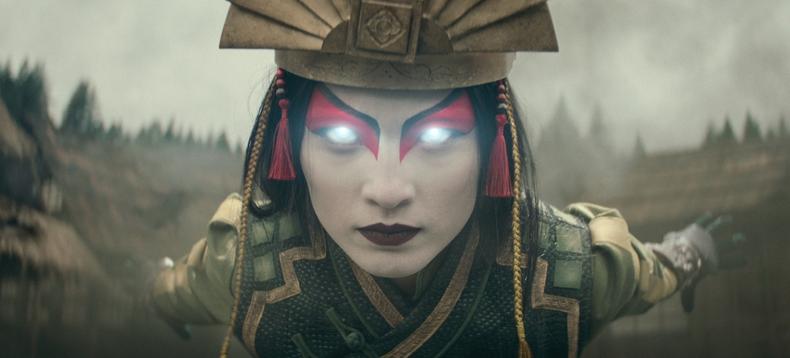
When you remember Clark Gable telling Vivien Leigh that, frankly, he doesn’t give a damn in “Gone With the Wind,” or Daniel Kaluuya getting sent to the “sunken place” in “Get Out,” you’re picturing a medium close-up. Read on to learn more about the magic of this filmmaking technique, with insights from directors, cinematographers, and actors in the industry.
A medium close-up, also referred to as an MCU, frames the subject from the mid-torso or shoulders to the top of their head. In short, it does exactly what it’s named for: combining the medium shot (from the waist up) with a close-up (tight on the actor’s face).
“A medium close-up shot is an extremely effective shot in the arsenal of a filmmaker. It’s often used more than a medium shot or a close-up,” says cinematographer Eric Oh (“Offside: The Harold Ballard Story,” “The Fight Machine”). “It allows the viewer to register the actor’s emotions while still retaining the context of the situation [and] background the character is in.”
When and why do filmmakers use medium close-ups?
“If you go too tight on a person, then you take them out of the environment, and if you go too wide, then they get lost in the environment,” says director Bobby Roth (“Agents of S.H.I.E.L.D.,” “Grey’s Anatomy”). “I use medium close-ups because I like to see the person in their environment, and I don’t want the shot to be so overbearing that you lose what they're saying.”
In “Oppenheimer,” director Christopher Nolan introduces us to the title character’s security hearing with a medium close-up on actor Cillian Murphy. This accomplishes several things at once: We can focus on Murphy’s eyes and feel as boxed-in as his character does during the interrogation, but we can also see Emily Blunt as Katherine Oppenheimer out of focus before she becomes a more integral part of the story.
The MCU is also a great option for when you need to convey information while remaining visually impartial. Used as an over-the-shoulder or two shot, you can keep track of more than one character’s emotional arc throughout a scene without unmooring the viewer.
“I often use MCUs when the scene calls for a somewhat neutral shot option when shooting coverage,” says Oh. “It’s a good compromise between a medium shot, where you might not register the actor’s subtle emotional nuances by being a little too far away, and a close-up, where you may unnecessarily give too much importance to that shot or character or are too jarringly close.”
In “Top Gun: Maverick,” director Joseph Kosinski used MCUs for this shot-reverse shot conversation between Maverick (Tom Cruise) and Iceman (Val Kilmer). By getting close (but not too close), Kosinski can portray each man’s reaction to the other, even when they aren’t speaking.

“Avatar: The Last Airbender” Courtesy Netflix
Acting in any close-up, much less an MCU, differs in several ways from performing in wider shots. You’re limited in your ability to move to stay in frame, and the camera will pick up tiny details in your expressions. To make it work, keep these three things in mind:
1. Go back to basics. “Whether it's a wide shot, a close-up, on stage or on screen, it's still about the fundamentals,” says actor Adolyn H. Dar (“Every Day,” “Good Sam”). When in doubt, go back to your script analysis and character work. Ask yourself the five foundational questions. Always remember what genre you’re working in.
“A medium close-up on a dramatic genre piece will look different than a comedic one,” Dar says. “Keep it grounded. Keep it real. Know your circumstances. When the camera is close, know it will pick up everything, and it doesn't lie.”
2. Less is more. On-camera acting requires a deep understanding of micro-expressions, especially for any type of close-up. Scale back your emotions to small gestures and facial tics.
“When I know I have a scene with a medium close-up, I know that it’s close on my face/upper body, and I can really evolve to portray expressions, emotions, gestures, and body language that this character may have at that moment,” says actor Mary Cameron Rogers (“Under the Silver Lake”). “You want the audience to connect with and feel the journey this character is experiencing.”
3. It’s (mostly) all in the eyes. Cliches keep coming back around for a reason, and “the eyes are the windows to the soul” is no different. As a performer, you can display a deep well of feeling with your eyes, whether it’s deep sorrow or glee. And remember, that emotion doesn’t have to match the dialogue; often, your mouth will say one thing while your expression says another.
“A lot of the story comes from within your eyes,” Rogers says. “If the character is experiencing the happiest day of their life, you can truly experience that feeling of joy deep in their eyes.”